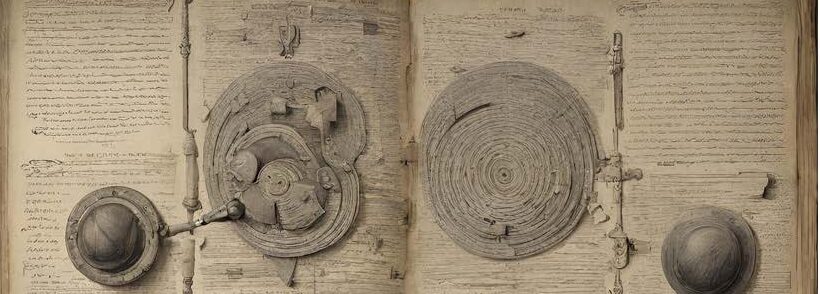Calligraphy refers to the craftsmanship of writing in an aesthetic and elegant manner that has been used for various purposes throughout history. For instance, calligraphy has been used mainly for writing on manuscripts, inscriptions, invitations, testimonials, scrolls etc. The art of calligraphy has been developing for centuries with earliest forms of calligraphic art being created from the 4th century (“From quill to calligraphy pen- How calligraphy has evolved over time,” 2022). The calligraphic pen refers to the usage of a specialized writing instrument that assists the users to write words, phrases etc., in a very artistic manner. According to the International Journal for Social and Human Sciences, “calligraphy has played more roles by maintaining the balance between the practical transmission of textual information and the creation of aesthetic impact through the calligraphic brush or pen and the color of the writing” (Halimi, 2021, p.10). The different types of calligraphic pens include Quill, fountain pen, dip pen, ink brushes etc (“Calligraphy,” 2023).


Overview of the traditional calligraphic pen
The earliest form of calligraphic pen to be created was known as the ‘Quill’ which is a lightweight pen made from a bird’s feather. This traditional calligraphic pen is sharp-pointed and has a cut-edged area to create a nib that could hold and distribute ink (“From traditional to modern: The evolution of calligraphy and fountain pens, and markers,” 2023). In order to produce fine and detailed lettering, the nib of this pen is flat or angled in order to create various styles and strokes. Quill pens were the primary writing instruments from the 6th century up until the 19th century and due to their sharpened finesses and precisions, these pens were mainly used for writing on scrolls, manuscripts and for ornamental designing purposes (Britannica, 1998). The main reason behind consistent innovations of calligraphic pens was that the initial innovation of Quill lacked the internal ink reservoir and therefore had to be consistently dipped into colored ink pad and inkwell while writing (“Calligraphy,” 2023). This issue many times led to the overwriting and blurring of words. Hence, brushes, ink pen, fountain pens consisted of colored cartridges or an internal ink reservoir to overcome this issue in calligraphic writing.


Evolution of the Calligraphic Pen in East Asian Region
Although the art of Calligraphy and the Quill pen initially originated in China, various calligraphic pens and brushes were further developed and used in countries all around the world such as Japan, India, Vietnam, Korea, Europe etc., (“evolution of calligraphy,” 2022). According to the Association for Asian Studies, “brush calligraphy holds a focal point in the cultural art and history in the East Asian region” (Association for Asian Studies, 2023, p.2). These brushes were developed using natural resources such as bamboo and sandal wood. Countries such as China, Korea and Japan use thick density black ink brushes to write words and characters by following a predetermined order of strokes in writing the characters (“Ancient to medieval east Asian calligraphy,” 2023). Brush calligraphy holds a highly value in the aesthetic traditions of China, Japan and Korea such as for scriptures, landscape painting, part of an illustrated book (Association for Asian Studies, 2023) thereby having a central role towards the study of the East Asian art history. Brush calligraphy has also played a significant role in the context of spiritual civilization through copying the text of scriptures such as ‘Heart Sutra’ scripture in Japan and holy scriptures in India (Association for Asian Studies, 2023).



Evolution of the Calligraphy Pen in the Western Region
With regards to the Western or Modern Calligraphy, due to the advancement of technology, the modern calligraphic pens have various unique innovations such as higher variance on shapes and tools used in order to create unique calligraphic styles and effects. Modern Calligraphic pens include fountain pens, dip pens, nib pens etc. The modern calligraphic pens such as broad-nib pen, fountain or ink pen were mainly created with the goal of having an inbuilt reservoir for ink within the pen rather than having to dip the pen in the ink constantly (“From traditional to modern: The evolution of calligraphy and fountain pens, and markers,” 2023). Since the traditional quill pen was hard to use due to issues of smudging or overlapping of words, the modern pens such as the fountain and dip pen provided artists the ability to consistently maintain a balance between think and thick strokes while writing words in an artistic manner. The modern calligraphy allows us to use any type of pen i.e. fountain or ink pen, thereby making it easier for both an amateur or an artist to use calligraphic form of writing practices.

References
- Ancient to medieval east Asian calligraphy. (2023, September 18). Brewminate: A Bold Blend of News and Ideas. https://brewminate.com/ancient-to-medieval-east-asian-calligraphy/
- Association for Asian Studies. (2023, June 30). Calligraphy in East Asia: Art, communication, and symbology. https://www.asianstudies.org/publications/eaa/archives/calligraphy-in-east-asia-art-communication-and-symbology/
- Britannica. (1998, July 20). Quill | Writing, ink, nib. https://www.britannica.com/science/quill-feather
- Calligraphy. (2023, November 3). Wikipedia, the free encyclopedia. Retrieved November 19, 2023, from https://en.wikipedia.org/wiki/Calligraphy
- From quill to calligraphy pen- How calligraphy has evolved over time. (2022, November 25). WRITTEN LETTERS. https://writtenletters.com/calligraphy/from-quill-to-calligraphy-pen-how-calligraphy-has-evolved-over-time/
- From traditional to modern: The evolution of calligraphy and fountain pens, and markers. (2023, October 27). King’s Framing and Art Gallery. https://www.kingsframingandartgallery.com/blog/post/from-traditional-to-modern-the-evolution-of-calligraphy-and-fountain-pens-and-markers#:~:text=Calligraphy%20pens%20have%20a%20rich,create%20intricate%20and%20elegant%20characters
- Halimi, N. (2021). From Written Word To Art/Calligraphy. PHILOSOPHICA International Journal of Social and Human Sciences, 8(15-16), 78-86. https://eprints.unite.edu.mk/783/1/Journal%202021%2C%20PHILOSOPHICA%20%281%29-78-86.pdf
- The evolution of calligraphy. (2022, January 27). TOMORROW’S WORLD TODAY. https://www.tomorrowsworldtoday.com/creation/the-evolution-of-calligraphy/#:~:text=Although%20calligraphy%20has%20been%20around,elaborate%20forms%20of%20script%20writing
